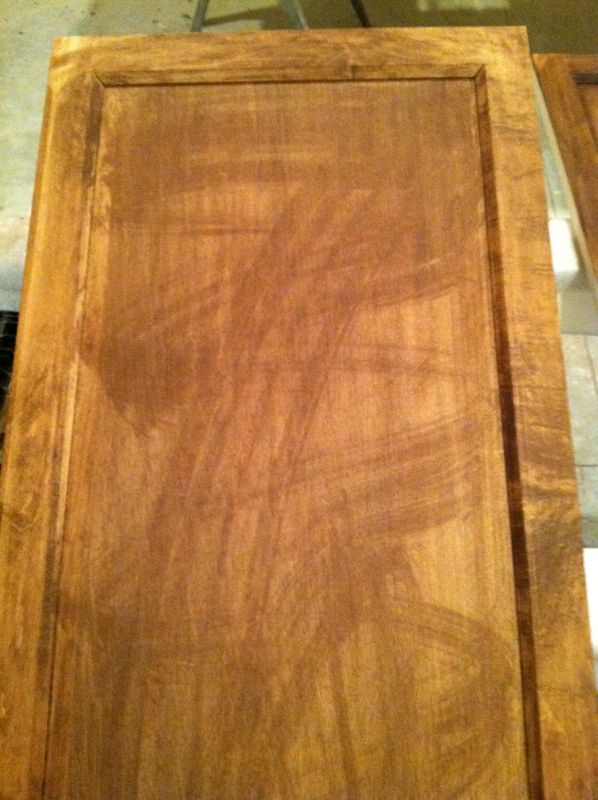Question
What's the difference between Sher-Wood Hi-Bild pre-cat lacquer and Sher-Wood pre-cat lacquer? Should I be using the Hi-Bild? Is it easier? Less coats?
Forum Responses
(Finishing Forum)
From contributor J:
It's the solid content. After you spray, the thinners, etc. evaporate, leaving behind the solids. Hi-Bild is higher solids, probably around 3-6% more. Should you be using it is up to you. Yes, it's more, but not by much.
Some will say to use the pre-cat as its own sealer, but I've found that unless you thin it for the seal coat, you will end up struggling with bubbles. And of course it takes longer to dry (twice as long). If you only had one spray rig, you might want to go that way, but I still think you'd like the fast dry vinyl better for your seal coat.
Again, I'm probably in the huge minority on this, but I've worked in high production finishing rooms and super high end finishing rooms and I've come to this after giving everything at least a couple months to a year try.
The other things I like about the gel stain are that it's absolutely idiot proof and it seals the wood much, much more than a wiping stain, and you can use it for glazes. The gels are not as quick to use as a spray only, but with practice, they are as quick as the wiping stains. Quicker, actually, as you aren't wash coating or conditioning the wood.
My typical schedule would be:
1. stain with gel stain, wait 4 hours (or about the time it takes me to stain a kitchen)
2. shoot full coat of catalyzed fast dry vinyl sealer, wait 30 minutes
3. sand with 320
4. topcoat
5. if necessary, topcoat again
I would not do 3 topcoats... You'd go over the mil limits at least with an airless or air assisted.
Minwax gel stains were a C- to McFadden's A+, but even at that I use them on occasion. The Minwax Antique Maple and Aged Oak, when combined 50/50, make a beautiful milk chocolate tone that I've used as both a stain and glaze many times.
Again, from what I've heard, the General Gels are good, but since I haven't yet opened the cans, I hate to give you a wholehearted endorsement. The McFadden's, General, and Minwax run about $18 a quart. An average kitchen for me takes about 3 quarts.
The other brand that was prominent was Bartley's, but they were bought up by McFadden's before they went belly up, so I don't know where they stand either.
If you go the standard wiping stain route, and if you can get it (here in the Pacific Northwest it's readily available), Daly's Benite is by far the best conditioner I've found. I much prefer it to any type of washcoat. It's very easy to apply and very forgiving. Although you are supposed to wipe it off after spraying or brushing it on, as long as it isn't puddling. I don't even do that. I think you will much prefer it to washcoating.
I've not used that particular brand of gel. I would be interested in trying it, as I am looking for a replacement for the McFadden's.
The gels give me a nice deep color, at least as deep as a wiping stain. However, I've only very limited experience with dyes, and I know they tend to give you a nice deep undertone that you can then apply over the top of. That said, since you are doing two applications of stain with a dye and with a wiping or spray, you can also do that with the gels if you need a deeper tone - that is, apply two coats of the same color or two different colors to achieve depth and patina. Still the same amount of steps. But I believe the gels give you the added advantage of having a small build, so I can do a seal, sand, topcoat and out the door. Helps eliminate that third coat, at least with my airless rigs that lay down a pretty heavy coat.
I had a customer that wanted a cherry kitchen with gold highlights. I sprayed Transtints in alcohol (honey yellow) and applied Wood Kote Jeld stain (no sealer in between) on cherry solid and veneers. The gold hinted nicely through the red. The customer loved it.
As far as gel stains go, they are okay and have a purpose (softwoods take a gel stain evenly), but you will never get the clarity out of a gel stain that you would out of a wiping stain or dye stain.
The reason is that the gel stains do not penetrate deeply (which is why they work to even out softer or blotchy woods), whereas a traditional wiping stain that is applied over a dye should penetrate more because it is thinner, therefore a clearer wood tone, especially with a deep, dark color.
An example finish schedule for a dark oak cabinet would be... Spray an even coat of dye 85 percent of the final depth (if you want a really deep, beautiful oak finish, spray to saturate and wipe off the excess). Mohawk Ultra Penetrating Stain - Van Dyke Brown - works well for me and dries to coat in 15 to30 minutes. The flake and the grain will now be very close in color, so to get the variation between the flake and the grain, I use a wiping stain over the top. In this example I would use Mohawk Wood Wiping Stain - Van Dyke Brown. It also dries to coat in 30 minutes. To topcoat I would apply two coats of SW Hi-Bild pre-cat T77 F57. For an even better finish I would apply a vinyl sealer before my first coat of lacquer.
